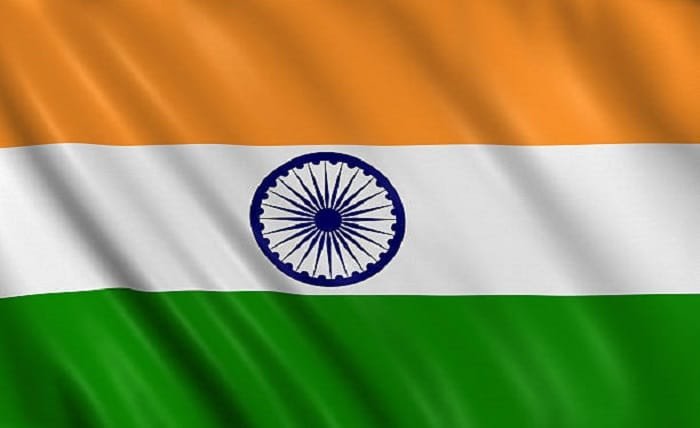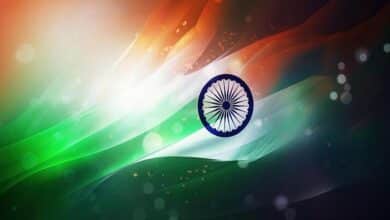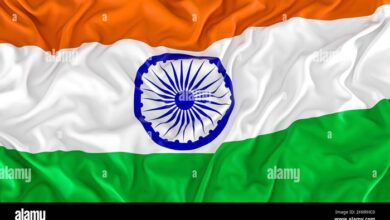The Proud Tradition of the Flag Waver India: A Deep Dive into Its Significance

India’s flag is more than just a national symbol; it represents the country’s rich history, struggle for independence, and diverse culture. The concept of a “Flag Waver India” is deeply rooted in the spirit of nationalism, pride, and respect for the country’s values. In this blog post, we will explore the cultural and historical importance of the flag in India and the role of flag wavers in uniting the nation under its tricolor.
What is the Significance of Flag Waver India?
A “Flag Waver India” symbolizes more than just the act of raising or displaying the Indian flag. It is an embodiment of the spirit of patriotism, unity, and pride in one’s nation. Whether during national celebrations like Independence Day or Republic Day, or during protests and rallies, the flag is an enduring symbol of India’s fight for freedom, democracy, and sovereignty. The “Flag Waver India” represents not just a physical action, but a connection to the history, culture, and values that India holds dear.
The Role of the Flag Waver India in National Events
The “Flag Waver India” plays a significant role in various national events. On Independence Day (August 15) and Republic Day (January 26), flag waving becomes a central activity during the celebrations. Citizens, public officials, and schoolchildren participate in hoisting the national flag, with ceremonies often accompanied by speeches, cultural performances, and parades. The flag represents the resilience of India’s freedom struggle and the unity that binds its diverse population.
History Behind the Flag Waver India Movement
The history of flag waving in India dates back to the Indian independence movement. During the struggle for freedom, the flag became a symbol of resistance against British rule. The Indian National Congress (INC) first adopted a flag in 1885, and it evolved over the decades to become a representation of the country’s fight for self-rule. The modern flag of India, with its three colors and Ashoka Chakra in the center, was officially adopted on July 22, 1947, just before India gained independence. Today, the “Flag Waver India” movement continues to inspire pride and unity across the nation.
The Symbolism of the Indian Flag
The Indian national flag carries deep symbolism. The saffron color at the top represents courage and sacrifice, while the white symbolizes truth and peace. The green stands for faith, fertility, and the land’s richness. The Ashoka Chakra in the center represents the eternal wheel of law and progress. Every flag-waver in India takes pride in this symbol, as it connects individuals to the nation’s values and vision for the future.
How Flag Waver India Unites a Diverse Nation
India is known for its vast cultural, linguistic, and religious diversity. Despite these differences, the flag has the power to unite people from all walks of life. Whether it is a schoolchild in Kerala, a farmer in Punjab, or a professional in Mumbai, the act of being a “Flag Waver India” transcends regional and cultural divides. It becomes a common ground, a reminder that despite differences, the love for the country binds everyone together.
The Role of Flag Waver India in Educational Institutions
In India, educational institutions play a key role in fostering patriotism among the younger generation. The “Flag Waver India” movement is commonly observed in schools, where students participate in flag hoisting ceremonies, sing the national anthem, and attend speeches by teachers or local leaders. These activities help instill a sense of pride and responsibility towards the nation from an early age. Schools often emphasize the importance of respecting the flag and the values it represents.
Flag Waver India and Its Role in Promoting National Pride
National pride in India is often visibly demonstrated through flag waving. On occasions such as Independence Day and Republic Day, citizens gather in large numbers, waving the national flag at public spaces, parades, and even private homes. This visible display of patriotism strengthens national pride and serves as a reminder of the sacrifices made by those who fought for the country’s freedom. The act of being a “Flag Waver India” is not just about raising a flag; it is about raising one’s spirit in solidarity with the nation.
Flag Waver India in Global Context: International Recognition
The global recognition of India’s flag has also contributed to the popularity of the “Flag Waver India” tradition. During major international events like the Olympics or the United Nations, when the Indian flag is hoisted, it becomes a symbol of the country’s achievements on the world stage. The act of waving the flag during such events resonates with the pride of millions of Indian citizens across the globe. It reminds people of their shared identity and common purpose, regardless of where they live.
Challenges Faced by Flag Waver India
While the flag is a potent symbol of national unity, there are also challenges in how the flag is respected and displayed. In some cases, there are debates about the correct protocol for hoisting the flag and respecting its sanctity. Instances of misuse or disrespect toward the flag have sparked national discussions on the importance of following guidelines for its display. The “Flag Waver India” movement aims to educate the public about the dignity of the flag, ensuring it remains a symbol of respect and honor.
The Future of Flag Waver India: Keeping the Spirit Alive
As India continues to grow economically and socially, the future of the “Flag Waver India” movement looks promising. With increasing participation from younger generations and a growing sense of national unity, the tradition of flag waving will likely continue to play a crucial role in India’s identity. Digital platforms and social media have also allowed flag waving to take on new forms, making it easier for citizens to participate in virtual celebrations and spread awareness about the importance of the flag.
Conclusion
The “Flag Waver India” is more than a ceremonial practice; it is an expression of patriotism, unity, and respect for the sacrifices made by India’s freedom fighters. The Indian flag, with its deep symbolism, serves as a reminder of the values of courage, peace, and progress. By participating in this tradition, citizens not only honor the nation’s past but also commit themselves to shaping its future. Whether at a national event, in educational institutions, or even in global contexts, the act of waving the flag continues to inspire millions, keeping the spirit of India alive in every heart.
FAQs
- What is the history of the Indian flag?
- The Indian flag was adopted in 1947, with its current design representing the country’s struggle for independence and core values like peace, courage, and law.
- Why is the flag important in India?
- The flag symbolizes India’s freedom struggle, its democratic values, and unity in diversity, making it a crucial part of the nation’s identity.
- What occasions are associated with Flag Waver India?
- Flag waving is most commonly seen on Independence Day (August 15) and Republic Day (January 26), as well as at various national celebrations.
- How can one participate in the Flag Waver India tradition?
- You can participate by attending national events, displaying the flag with respect at home, or joining in educational institution ceremonies.
- What challenges does the Flag Waver India movement face?
- Some challenges include maintaining proper protocol in flag hoisting and ensuring the flag is treated with the respect it deserves.





